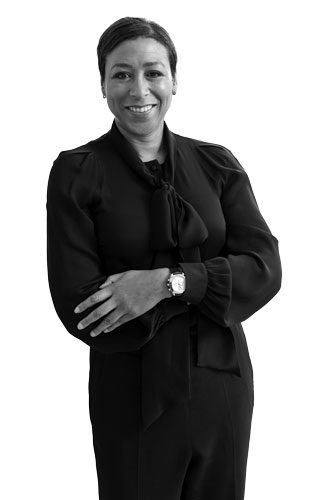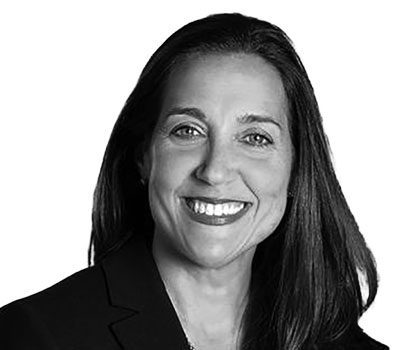For more than 20 years, Chester Elton and his co-author Adrian Gostick have been studying and writing about corporate culture while coaching thousands of CEOs at businesses large, medium and small. Across all of this, they’ve stumbled upon a single constant among all the top performers, one that might not be what you’d expect.
“As we studied the best teams, the best leaders, the best cultures, there was always this thread of gratitude—always,” he says. “And so it became very apparent that it wasn’t a nice-to-have if you were to be a great leader. It was an absolute must-have.”
That insight led to their book Leading with Gratitude (Harper Business, March 2020), which was—in a stroke of unbelievably good or bad timing, depending on your perspective—published just as Covid hit the U.S. last year.

While showing gratitude has always been important for leaders, says Elton, in this post-Covid era it may be the most essential thing you can do right now—for very pragmatic reasons. In the ever-tighter talent market CEOs are now facing, hanging on to great people is everything. And when it comes to retention, says Elton, gratitude is the most powerful tool available—far more so than money.
“You don’t leave people who love you,” he says. “The number one reason people leave a job is the relationship with their immediate supervisor. If you want turnover, don’t use gratitude. If you want people to stay, let them know that they matter.”
For executives facing down the rest of 2021 and looking into 2022 and beyond, the battle for great people is the whole ballgame. In survey after survey by Chief Executive and our sister publications Corporate Board Member and StrategicCFO360, the race to grab or retain key people is cited as the most important challenge the nation’s business leaders say they are facing.
Meanwhile, what younger workers are looking for in an employer is changing. Cliché or not, they want employers who give them a sense of purpose—or whose purpose aligns with their own. They want to understand why they are doing what they do, and why it matters. And they want to matter to their employers.
“The data is very strong,” says Dr. Bob Nelson, who has studied the psychology of gratitude and recognition in the workplace for decades. “If you have a culture of recognition, research finds that your employees will feel five times more likely to be valued than if the culture was not a strong culture of recognition. They’ll be six times more likely to recommend the organization as a great place to work. They’d be seven times more likely to stay with the organization for their career, if possible—which is huge. And then they’ll be 11 times more likely to feel completely committed to their job, their manager, the mission of the organization. So just some huge, huge benefits from doing this soft, fuzzy notion of an idea.
“This isn’t just feel-good fun and games,” he says. “This actually does matter to people. And if you want the best from people, it needs to matter to you.”
So, how do you show gratitude? How can you be more grateful? Chief Executive talked to CEOs and other experts for tips and ideas. It isn’t just about thank you notes and cards—but those play a part. It doesn’t have to be super-sophisticated, either. But it will take effort. “The reason a lot of people aren’t doing it is because that sounds like a lot of work,” says Elton. “And you know what? It is. And why do it? Because it’s worth it. Because you’ll keep your best people. You’ll attract great people—and they’ll produce for you.” It’s also a better way to live life.
* * *
Socialize Gratitude
Pam Maynard, CEO
Avanade, Seattle

Earlier this year, we offered employees a thank you bonus equal to one week’s pay. This wasn’t tied to business performance but rather to show them appreciation for their resilience over the past year and their commitment not only to our company but to each other and their communities.
We’ve also designed programs that embed gratitude into our day-to-day, such as a digital platform that allows employees to recognize colleagues based on criteria that align with our values at different levels of impact. Once posted in the platform, the employee is given an award with public recognition in a social stream—where their colleagues can comment—and their career advisor is notified as well. Those awards translate to points that have a monetary value.
And we celebrate employee-appreciation day, when we encourage everyone in the organization to send e-cards to colleagues. I’ve heard time and time again how much people enjoy sending and receiving these messages.
One-On-One With Superstars
Matt Bulloch, CEO
TentCraft, Traverse City, Michigan
We built time for “kudos” into the daily huddle agenda (for all first-shift employees). This is a public opportunity for anyone within our organization to show appreciation to anyone else within our org, for reasons large or small. Public kudos aren’t everyone’s thing, so we also have a quarterly employee survey that goes directly to the senior leadership team that provides a forum to thank someone that is going above and beyond.
As part of my monthly one-on-ones, I also ask all my direct reports to identify one “superstar” on their teams. I then, right after my one-on-one is done, take that opportunity to go find that person, thank them, pass along the great message from their supervisor and just let them know how much I appreciate them.
Write 9,400 Cards A Year
Sheldon Yellen, CEO
Belfor Holdings, Birmingham, Michigan

For more than 30 years, I have hand-written birthday cards for every employee and associates of our company beyond employees. I’m up to 9,400 a year. I write a message on the inside, not just sign my name. I’ll write, “Wishing you a happy birthday.” Or if I’ve recently seen the person, I’ll write, “Great seeing you in Texas” or “three weeks ago in Nevada.”
I have a stash of birthday cards with me everywhere—in my office, at my house, on my airplane. Every time I get a free 15 to 20 minutes, I’ll do “X” number of cards. Each time on my plane I probably get 100 cards done.
We try to capture people I meet along the way. I just did an interview with a journalist and the guy said, “How do I get one of those birthday cards?” Without his realizing it, we found out his birthday and a card showed up for him.
I also show gratitude by handwriting notes to people when I find out about random acts of kindness. I just met a young man at a car dealership in Arizona, and he called to give me an update. In the middle of the call, I said, “Stop: Tell me what random act of kindness you did today.” He told me about opening a door for a lady. And I said, “God bless you.” Then I wrote a note to him and said, “Keep it going.”
‘Grateful Appreciations’
Marc Braun, Fmr. President,
Cambridge Air Solutions, Chesterfield, Missouri
We practice gratitude every day in our daily morning meeting where we have a slide that says “Grateful Appreciations.” It is a dedicated time for anyone in the company to share anything in their life that they are grateful for. Additionally, we meet weekly as an executive team—and many of our departments do the same—and share what we are grateful for from other employees inside the organization and from each other.
We also have a private chat channel where our executives have been sharing gratitude with each other, stretching from personal to professional. This daily practice builds the skills inside the organization to express gratitude in many other interactions.
I believe that gratitude, and expressing genuine gratitude, leads to enhanced performance and improved relationships. I also believe that if you are expressing it in order to gain improved performance, it loses its genuine feel and its power. Gratitude is a selfless act of giving to another—and therefore doing so without any expectation in return is where the power lies.
Over Covid, I also strengthened my own practice of daily “gratitude journaling,” and there were several groups of business leaders who started sharing gratitude with each other on a daily basis. It built strong relationships through the time of separation, and I can point to strengthened marriages, better mental health and so much more.
Forget The Gimmicks
Mike Baker, CEO
Heritage Health, Coeur d’Alene, Idaho
We send personalized thank you cards to the homes of team members. It is fun to see these come back to work and be hung at workstations. We utilize our internal website for a “Kudos” section where everyone can thank or recognize another team member for being amazing. We highlight employees of the month, which we share in our newsletter, with our board and on social media. We do a summer and winter party, and all supervisors are empowered to share bonus bucks with people they would like to recognize.
But when people feel supported and loved in the workplace, you don’t need gimmicks to enhance performance. Expressions of gratitude must be genuine. There is nothing worse than fake gratitude. Teams can spot that easily—and it demotivates people every time. Sometimes, an expression of gratitude gets lost in the messaging or the logistics of getting it out to folks. When this happens, we regroup and do it differently the next time.
Build Yourself a Gratitude Channel
Jerry Ting, CEO
Evisort, San Mateo, California

We have a dedicated team specifically focused on client-appreciation events such as networking opportunities, shared resources and access to company management to deepen our partnerships with their leadership teams and organizations.
Taking people I appreciate out to dinner or to an event goes a long way to show them I care. The shared experience pays dividends in deepening that partnership beyond the Zoom screen. Or sending lunch when you meet with someone over Zoom goes a long way. If I can’t take someone out, I send them company swag that’s tailor-made to them and has daily utility so they feel connected to the Evisort journey.
We’ve also started a company-wide gratitude board on corporate communication channels. This allows employees to show their gratitude with the teammates who helped them out. This gratitude channel is used across departments and builds a sense of gratitude as a core company value.
Make Kudos ‘Kore’
Romil Bahl, CEO
Kore Wireless, Alpharetta, Georgia
I’ve worked closely with our CHRO to develop and roll out formal approaches we call Kore Salutes and Kore Kudos.
Salutes enable peers to celebrate and recognize their peers. Any IoT-er can nominate anyone in seven categories: “Consider It Done,” “Customer Whisperer,” “GEM (Going the Extra Mile),” “Constant Contributor,” “Continuous Improvement,” the “All-Star Team” and the “Spotlight Award.” The executive leadership team decides who the winners are from the nominees, so people at all levels are getting exposure in front of the company’s top leaders every quarter.
Kore Kudos allow leaders and people managers to nominate employees from their teams for an award based on performance. We celebrate these at our quarterly global all-hands meetings. Sometimes I’ll pick up the phone and call an IoTer who has done an outstanding job, thank them and delve into a conversation with them that helps me to get to know them as a person better than before. Or I’ll write a personal email to a new customer and thank them for selecting Kore.
Recently, I extended a surprise invitation for dinner to one of the vice presidents on our team to personally celebrate the fact that he had taken on more responsibilities as the company heads toward its public listing. He had been working long hours, on weekends and on vacations, all the while helping others throughout the company. I was not only grateful for his dedication but also his brilliant problem-solving skillset, his humility and his focus on doing the right things to help the company grow.
Start With The Board
Jen Leary, CEO
CliftonLarsonAllen, Minneapolis

All of our board meetings start with 20 to 30 minutes of sharing what we are grateful for and of positive experiences recently shared at CLA. Our board chair, Scott Dietzen, introduced this concept to us, and it’s been one of the most impactful contributors in building closeness.
With employees, we’re doing some specific things to communicate deep, genuine gratitude. June was CLA Family Appreciation Month, where teams celebrated in ways they felt would be most impactful, across all 120 of our locations. Some hosted community-service events, breakfast events or happy hours. Many shared stories about employee impact. Others hosted gratitude meetings with clients. And the ideas keep flowing.
On July 2, we had CLA Family Appreciation Day. It’s always good to take a vacation day, but it’s even more powerful when you know others are taking time away as well. We all slowed down a bit. Not to mention that it helped us get right into a nice, long Fourth of July holiday weekend.
Personally, I carry gift cards when I travel and write short notes to people when I can. I’ve always loved doing that because I’ve been on the other side of such a gesture and know how special it feels.
Start With A Vision
Bob Chapman, Chairman and CEO,
Barry-Wehmiller, St. Louis
Our vision is to measure success by the way we touch the lives of people. Letting people know they matter, showing gratitude for who they are and what they do, is a very natural extension of that vision. And it applies not just to our team members but also to their families, our customers, suppliers and the people in the communities in which we work and live.
The core principles we teach in our internal university—empathetic listening, recognition and celebration, and adopting a service mindset—have helped create a culture where expressing care and gratitude are the norm rather than the exception. In our organization, gratitude is shown in many ways, from face-to-face conversations, letters written to a team member’s spouse or parents about the great work they did on a project or large-scale celebrations during which we recognize team members for embodying the tenets of our culture. It happens regularly and routinely, and that’s because we’ve created an environment where people feel safe to express their emotions and appreciation.
Gift A Time Out
Eric Friedrichsen, CEO
Emburse, Los Angeles

Now, more than ever, employees are struggling with time management. They are juggling their work commitments with family and community commitments. Just simply acknowledging the importance of this balance goes a long way with employees.
As a measure of gratitude to our employees, we created an “unplugged” day each month for people to focus on mental health and catch up on life. Many of our employees highlighted what they did with their time on social media and internal company Slack channels, and it was inspiring. You could tell how much it meant to them.
While I try to cultivate a daily practice of gratitude, I also block a day on my calendar once per month to call employees to thank them for their specific accomplishments. I intentionally do not schedule the calls. I embrace the “old-fashioned” nature of that impactful and human moment when picking up the phone to make that dedicated one-on-one time.
Make Space To Be Thankful
Angela Sebastian, CEO
Levenfeld Pearlstein, Chicago
Expressions of gratitude should be both personal and specific. I strive to build a strong personal connection by asking how a person is doing—how they are really doing—before jumping into the business at hand. For gratitude to be specific, we need to describe what we’re thankful for and why it was impactful.
The most effective expressions of gratitude are authentic, personal and unrushed. Expressing gratitude should be given in a timely manner but not squeezed in between meetings or other obligations. For gratitude to improve a relationship, we need to give people our time, unencumbered by distractions. We must be fully present in the conversation and communication.
People tell me this works, and I see the generative impact of gratitude. When people feel seen and appreciated, I see behaviors that lead to more expressions of gratitude. An intentional approach to gratitude isn’t just about being a good human but about being a good business strategist as well.
Focus On The Individual
Derek Pacque, CEO
Chexology, New York City
Whether it’s in our weekly team meetings or randomly picking up the phone, I always acknowledge team members directly. I make a point of calling out their names and specifically detailing what they accomplished. I never say thanks to the “products team” or “Sally and her team” because it’s too general and sounds generic. It also does not name the specific people involved in the task. I dig deeper because I want people to genuinely know the positive role they played in that initiative, understand I know they went above and beyond and hear from me that their actions didn’t go unnoticed.
I like to celebrate office milestones through experience-driven events and outings. For example, when we close on new projects, we may go out together for dinner to share the success. I always make a toast and go around letting everyone know specifically how they helped the project come to fruition. I try and use as many details as possible and personalize why I am grateful for their efforts, contribution and leadership. It brings the team together.
